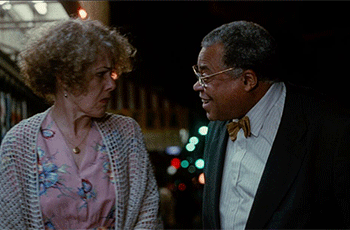
Out of the Vaults: “A Farewell to Arms”, 1932
Meher Tatna 09/29/2020There is an apocryphal story about Ernest Hemingway telling Howard Hawks his opinion of Hollywood money. “Walk to the Nevada side of the California state line and have them throw the money to you. Walk away. Do not enter California,” he is said to have told Hawks.
It’s probably what he did when he sold his novel A Farewell to Arms to Paramount Pictures in 1930, taking $80,000 ($1.25 million in today’s money), and then loudly complaining about the finished picture (he sold Hollywood several more rights subsequently.) But even though this was the first filmed adaptation of Hemingway’s books, he did have a reason to complain. The Frank Borzage-directed movie shifted the focus of the WWI-set movie from the war to the romance between the lead actors. And what was even worse, he shot two different endings: a sad one faithful to the book, and a happy one where the heroine doesn’t die, and then the studio compounded the insult by letting exhibitors choose which version to screen. But Hemingway did get something out of the experience. He made a life-long friend of star Gary Cooper, and while they vacationed and drank together, apparently the subject of the movie was never raised between them.
Cooper plays Lt. Fredrick Henry, an ambulance corpsman in Italy during WWI who falls in love with a British nurse, Catherine Barkley, played by Helen Hayes. His jealous friend Major Rinaldi (a mustachioed Adolphe Menjou complete with an Italian accent) conspires against them by having Catherine transferred to Milan, but when Frederick is wounded and ends up in the same Milan hospital, the lovers are reunited and Catherine gets pregnant. Frederick, unknowing, goes back to the war; Catherine goes to Switzerland to have her baby. Rinaldi intercepts their letters. When Frederick eventually learns of Catherine’s pregnancy and whereabouts, he deserts the army to go look for her. Their reunion is tragic or happy, depending on the version seen.
Hayes was the bigger star and receives top billing in the film. Fredric March was originally supposed to take on the lead but dropped out when his choice of director, John Cromwell, was replaced by Borzage, and the role was offered to Cooper. Other cast members include Mary Phillips who plays Catherine’s friend, Jack La Rue is the priest who marries them in a ceremony of sorts, and Blanche Fridici is a Nurse Ratched-like character who thwarts the lovers at every turn.
The film cost about $800,000 to make in the pre-Code era of Hollywood. But there were problematic scenes that the Motion Picture Producers and Distributors of America (today’s MPAA which censored movies back then) were unhappy with, such as the seduction scene in which Catherine gets pregnant as an unwed woman, the “marriage” scene performed by a Catholic priest, Frederick’s desertion from the army, and the labor scene with Catherine hemorrhaging. The popularity of Hemingway’s book was one reason the story wasn’t altered further as audiences wouldn’t stand for it, but the MPPDA forced some changes, such as references to labor pains, toning down the birth scene, and hiding Catherine’s pregnancy bump behind props. The Hayes Code would not be enforced for another two years, which explains why scenes like soldiers visiting brothels were left in. Hemingway’s contempt for the Italian army in the novel never even made it into the script from the get-go. A subsequent 1938 release of the movie had even more cuts.
From today’s perspective, the film is dated and melodramatic, especially Catherine’s death scene where she lies, fully made-up in bed, gasping out that she’s not afraid of death before expiring dramatically in Frederick’s arms. Frederick then sweeps her up, the folds of her gown gracefully trailing behind him take her to the window, and intones “peace, peace” to some unseen listener. But there are many things to admire about it, aside from Cooper’s dashing looks. Oscar-winning cinematographer Charles Lang did wonders with limited technology in the battle sequences which are shown in a montage with dramatic music. And one scene in which the gurney-bound Frederick is taken through the hospital shows the scene from his point of view, sweeping the beautiful ceilings of the old building in Milan, an angle not much used in films up to then.
The original film released in 1932 ran 89 minutes. Farewell was nominated for the Oscar for Best Picture and Best Art Direction and won for Cinematography and Sound.
Farewell was rereleased in 1938 with further cuts, down to 78 minutes, and remade twice in the 1950s. The 1932 original disappeared from screens. It reemerged on television in the 1980s with 10 missing minutes from the original. The studio in the title credits was now Warner Bros. who had taken over some Paramount assets by then (that’s the version on Amazon Prime right now; that version is also missing the seduction scene). It is now in the public domain with various versions online at various lengths, including an unrestored version on YouTube.
The restored version was shown on TCM in 2004, back to 89 minutes with the Paramount logo opening and closing the film as it did in 1932. It was preserved by the UCLA Film and Television Archive with funding from the Hollywood Foreign Press Association and The Film Foundation. The restoration was done from a 35 mm nitrate print obtained from David O. Selznick’s estate (the Paramount 1932 version) provided by George Eastman House. Twelve minutes cut from the 1938 reissue were restored; both endings were also preserved.
HFPA